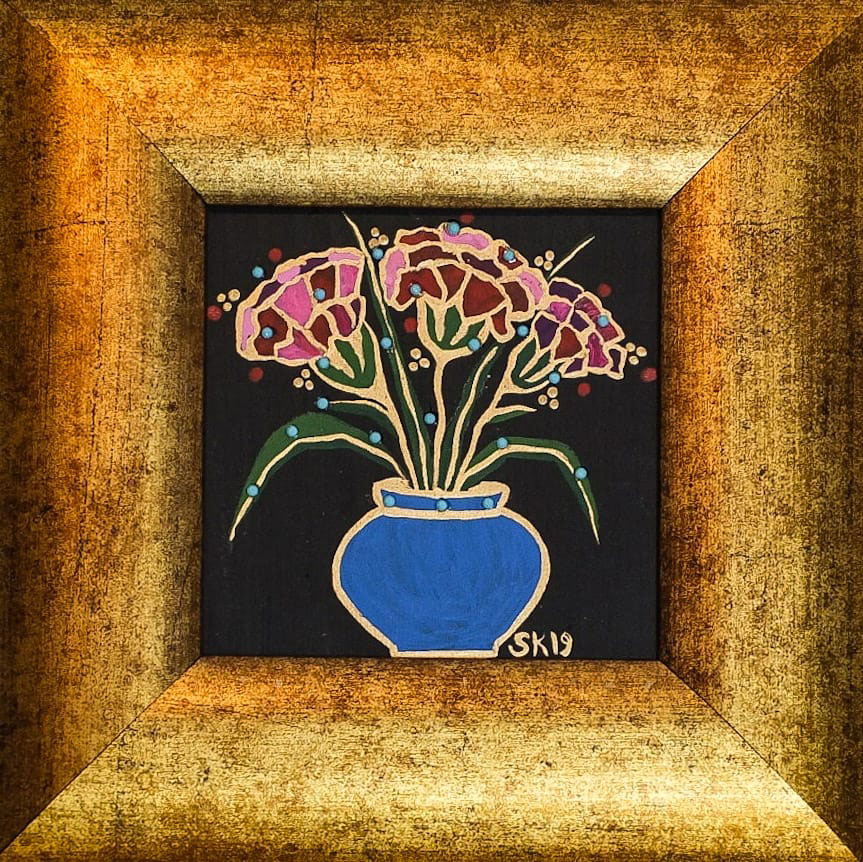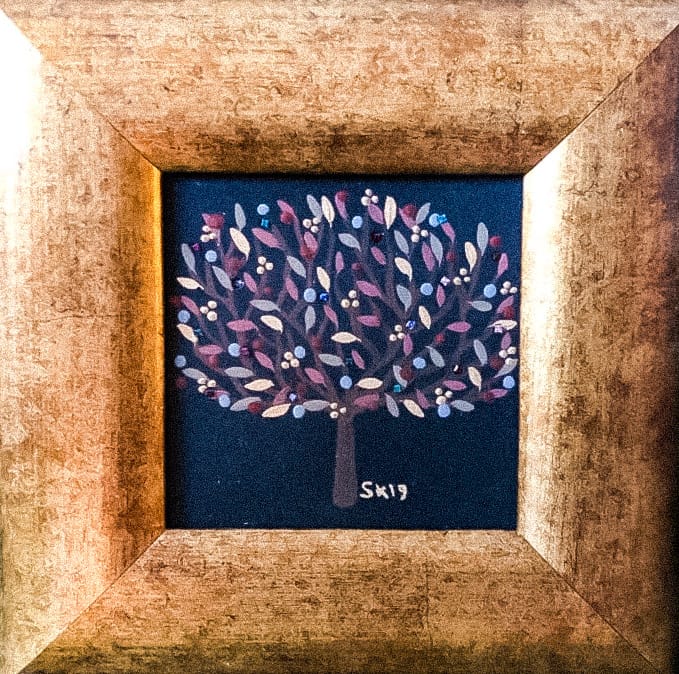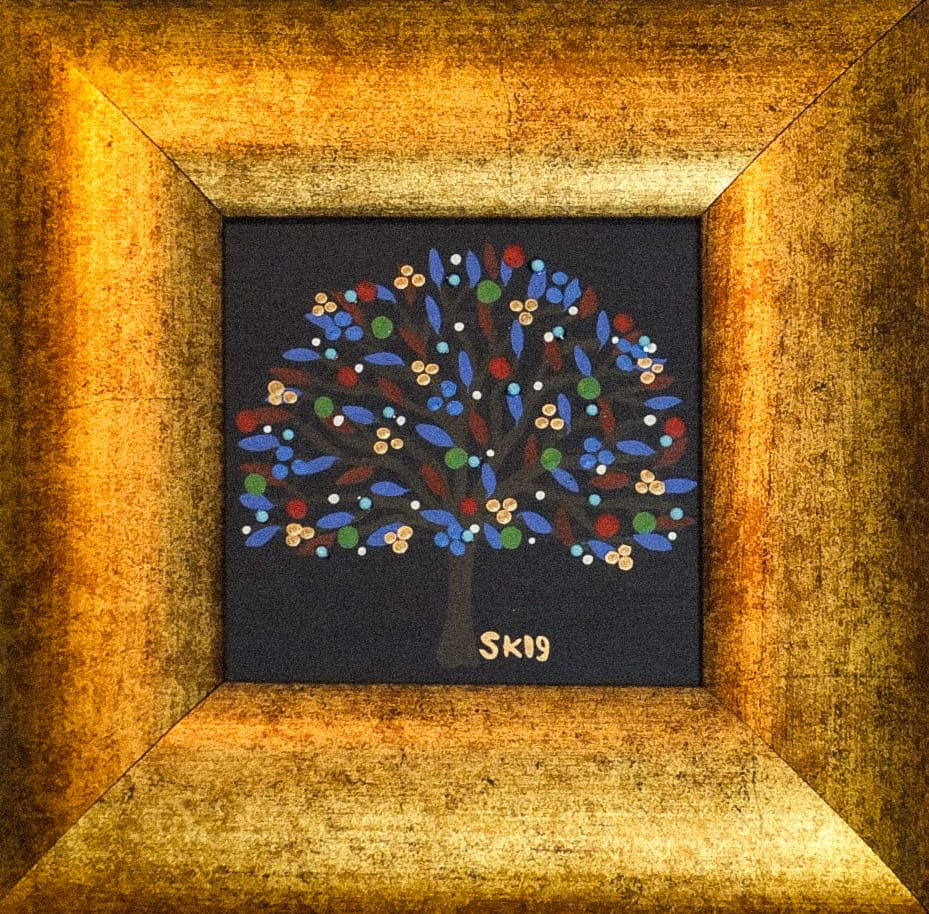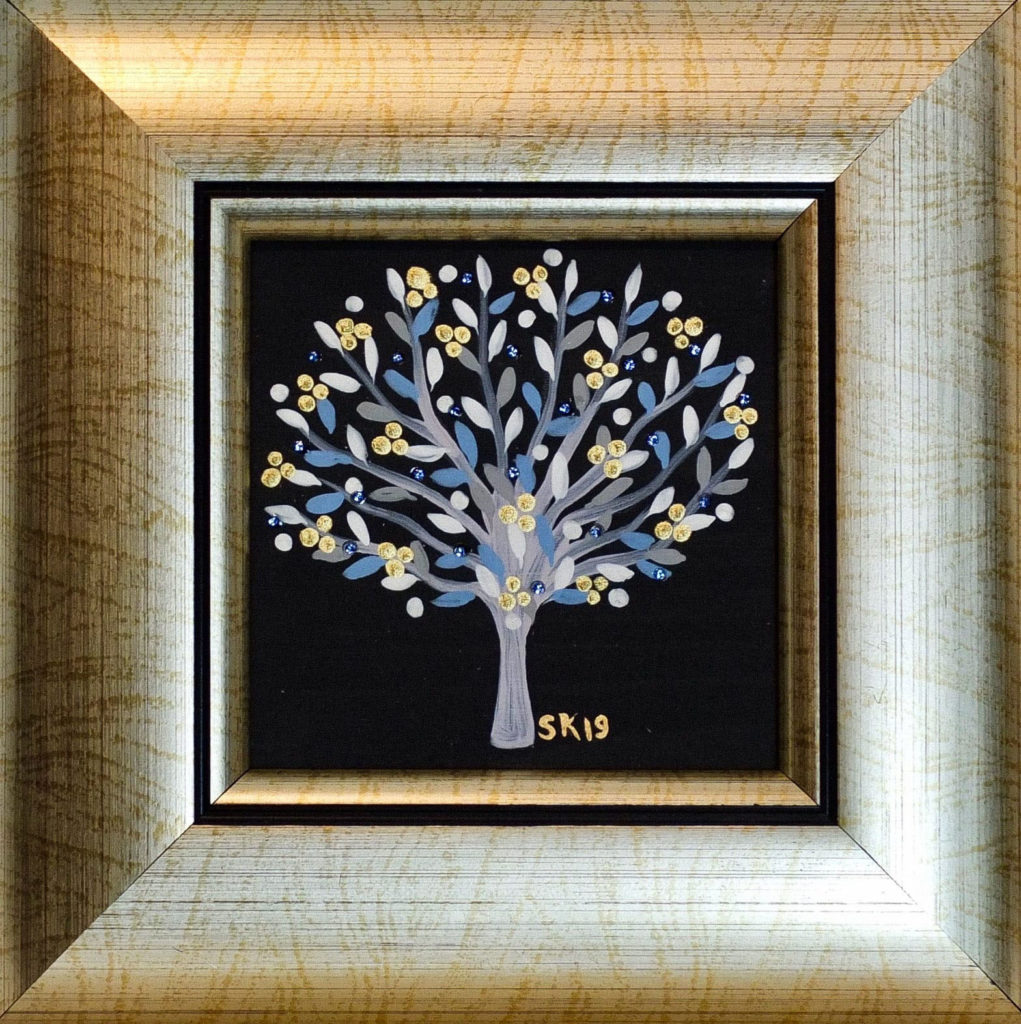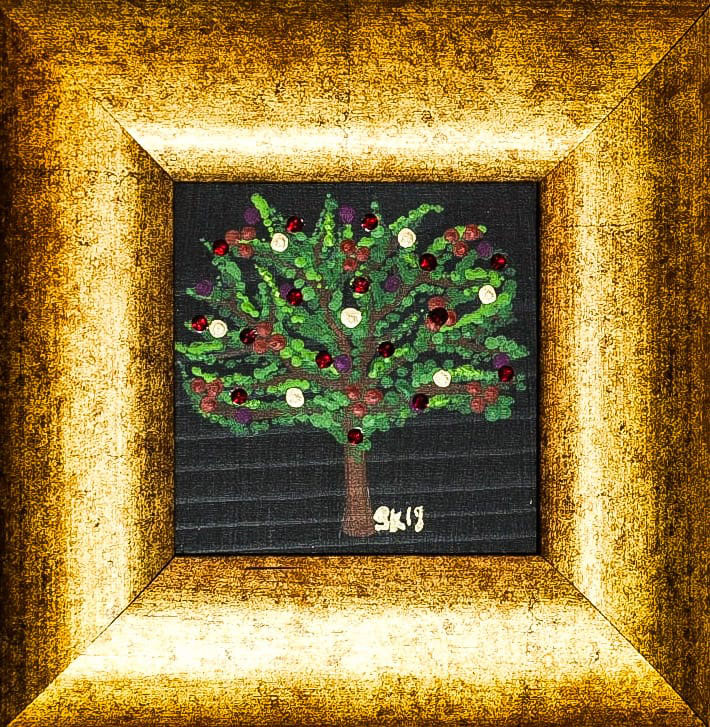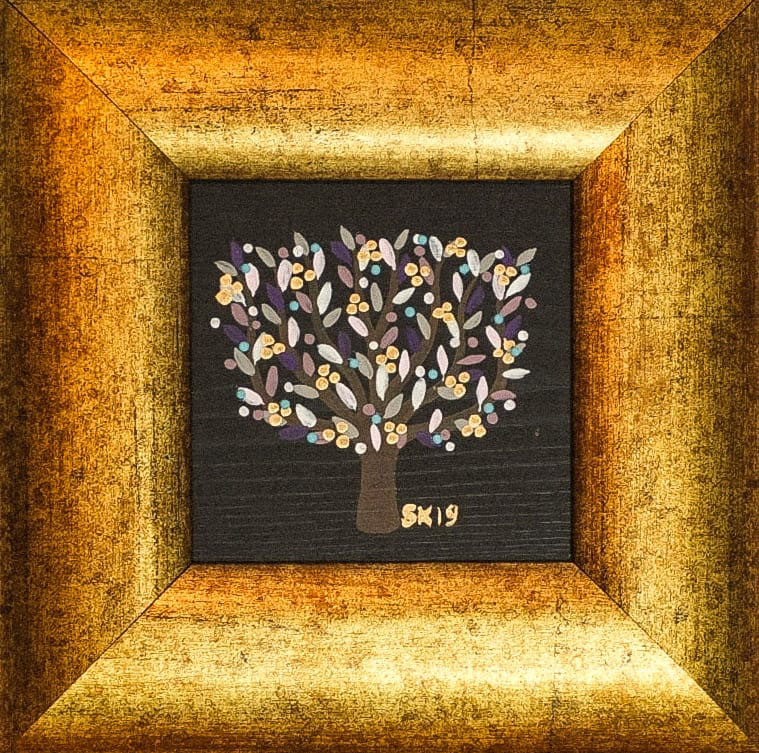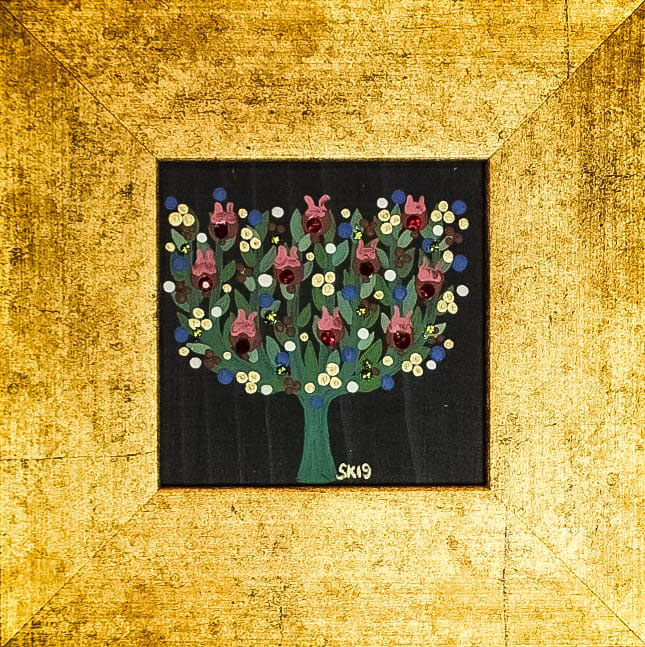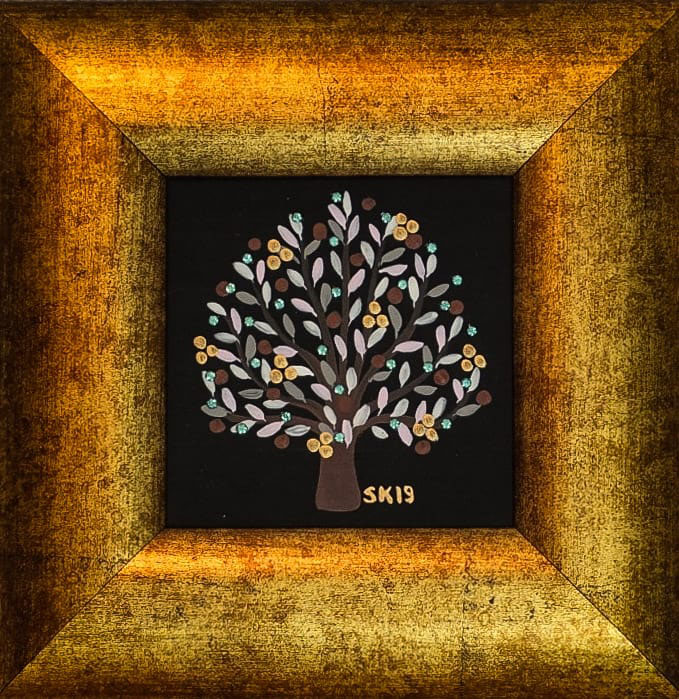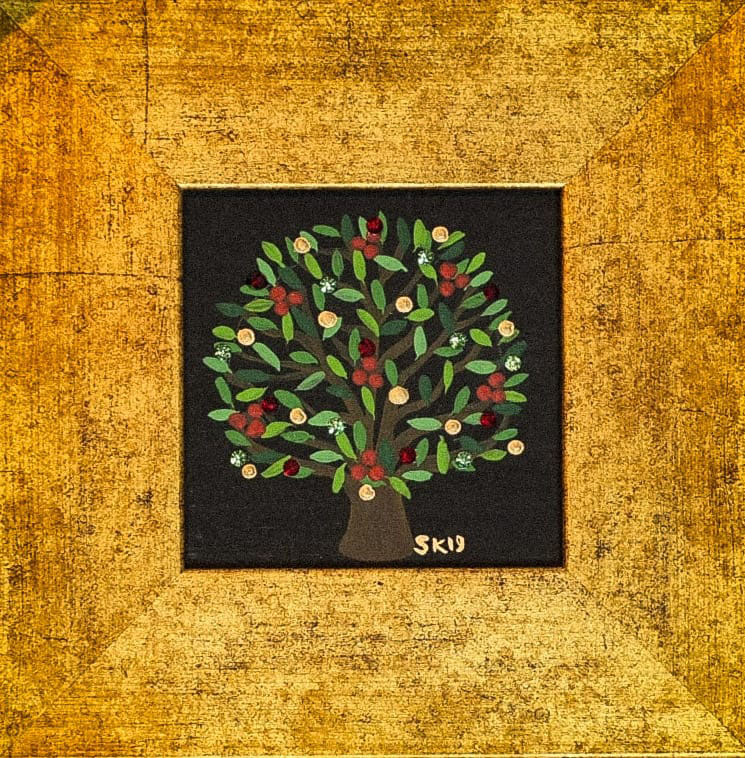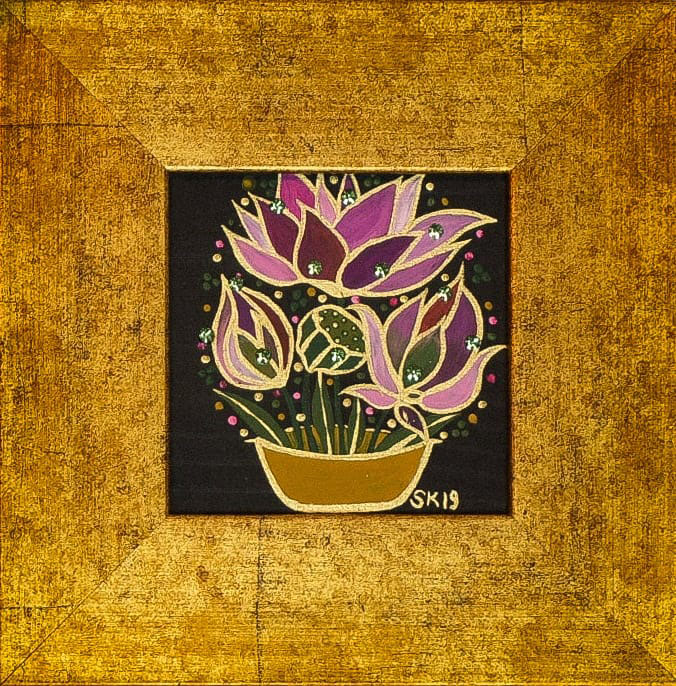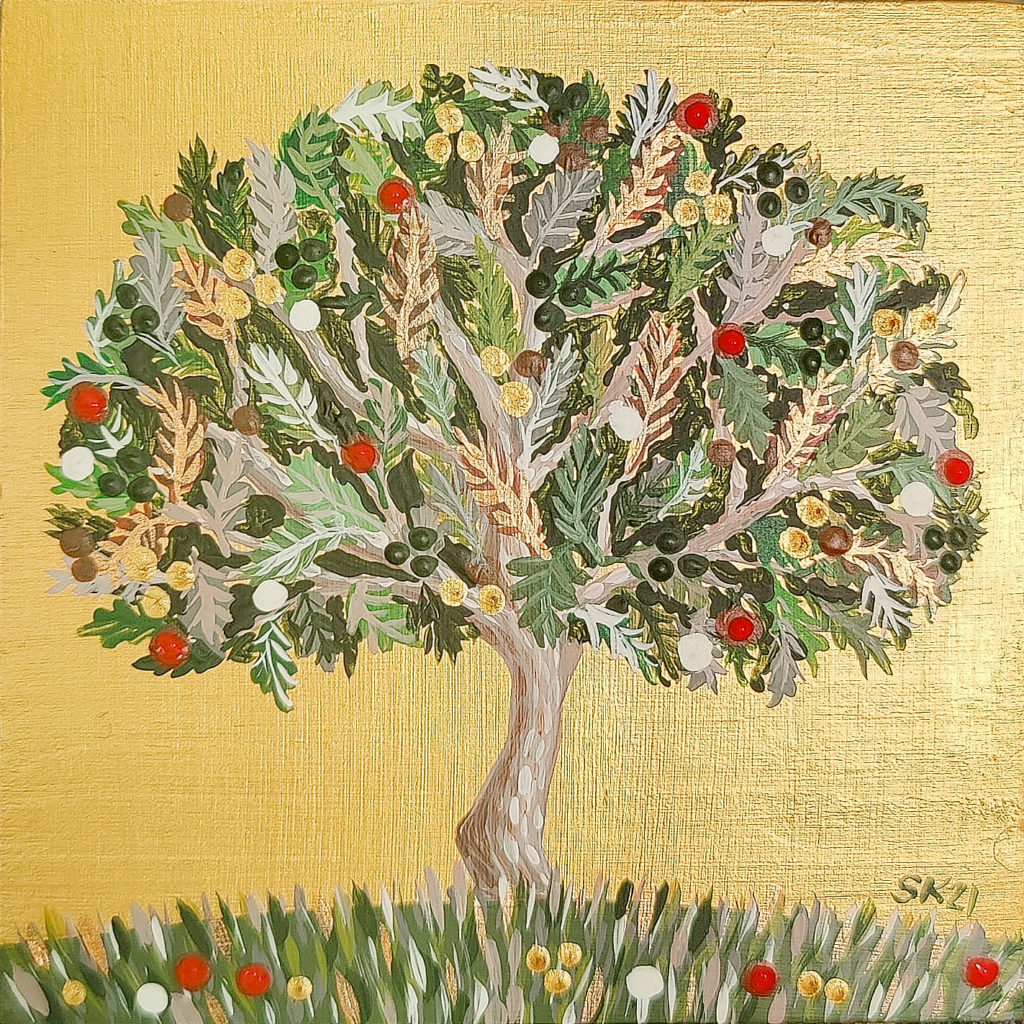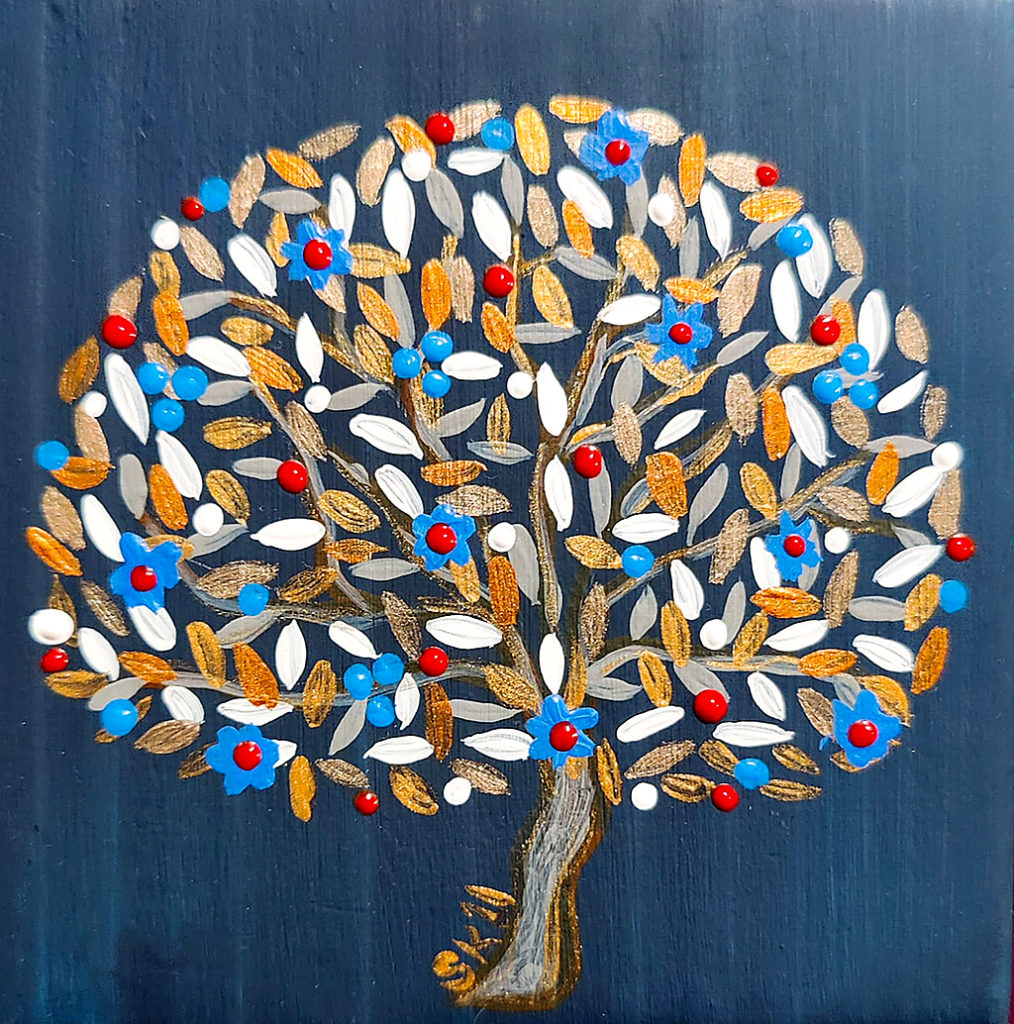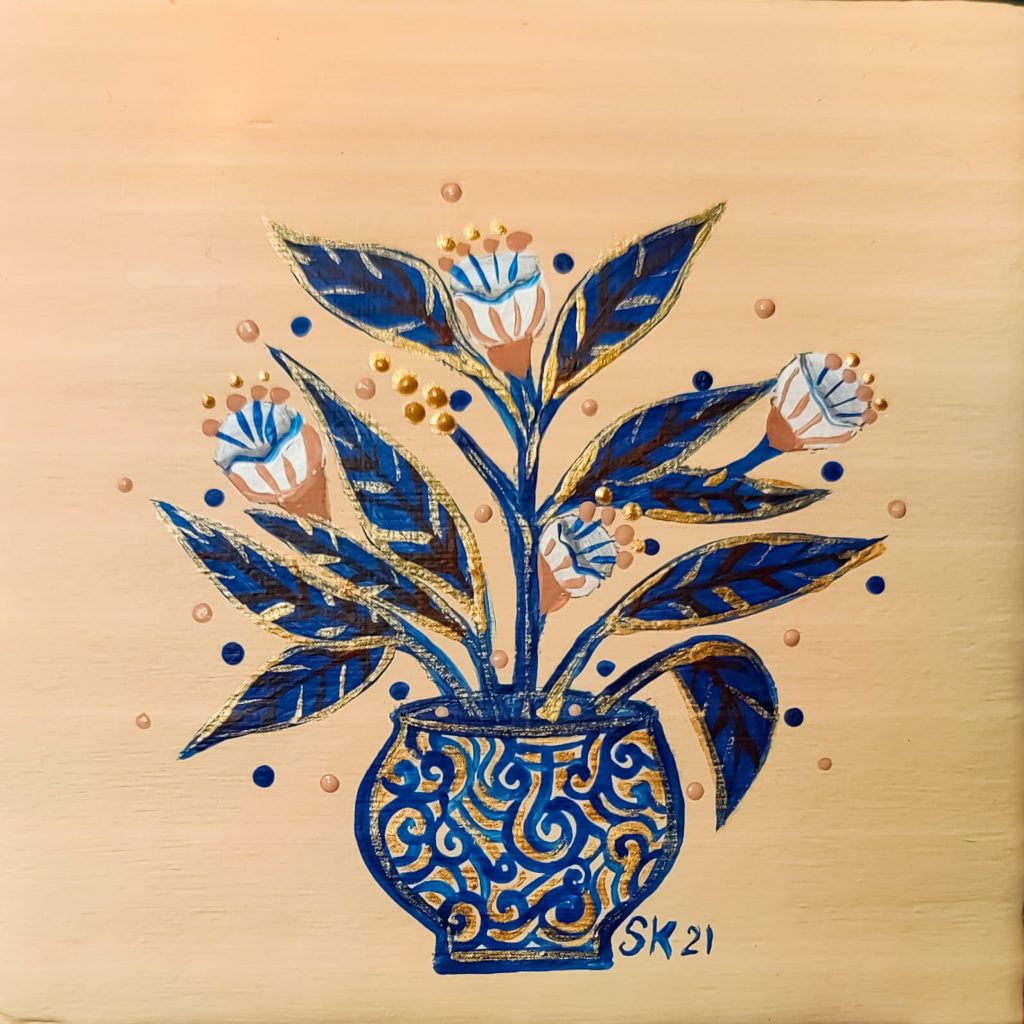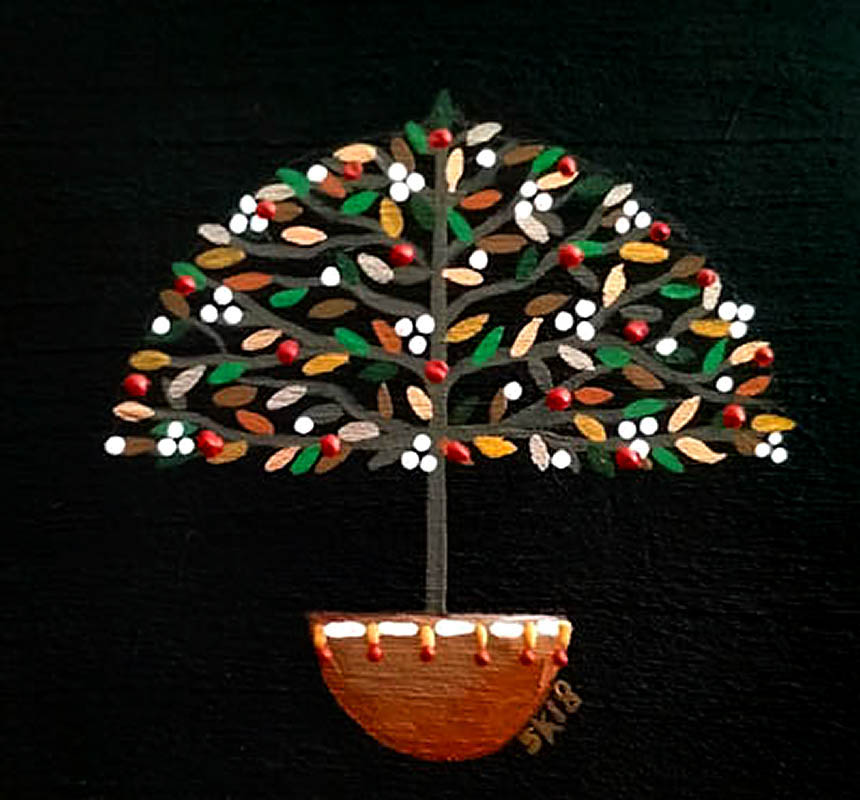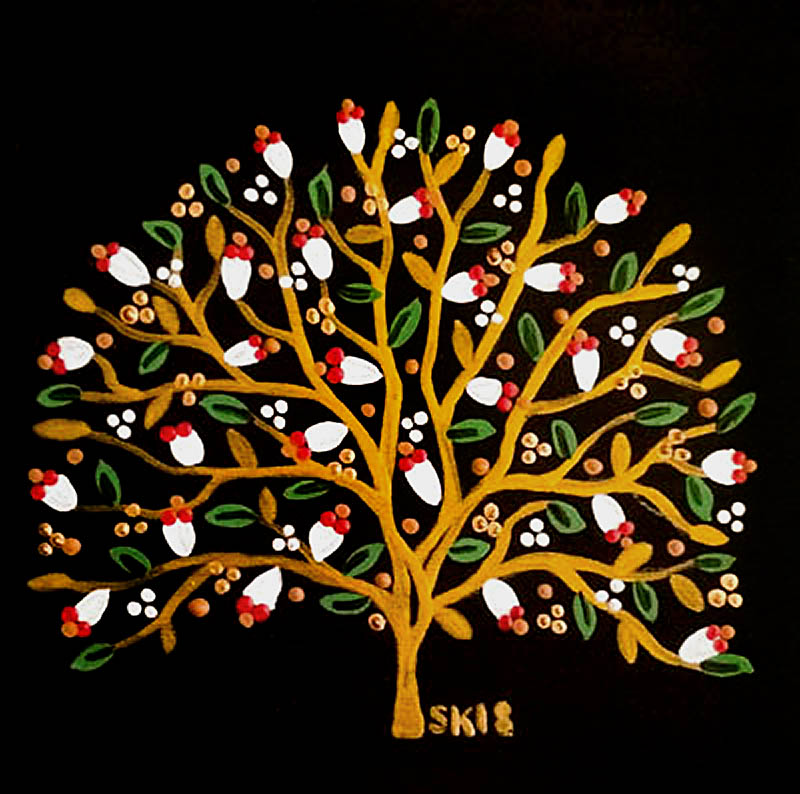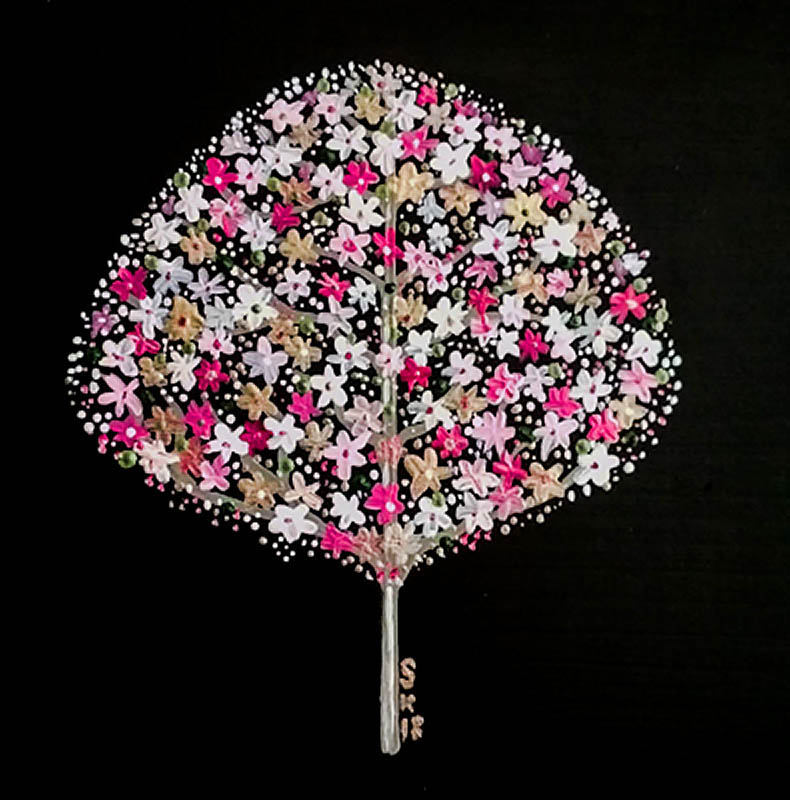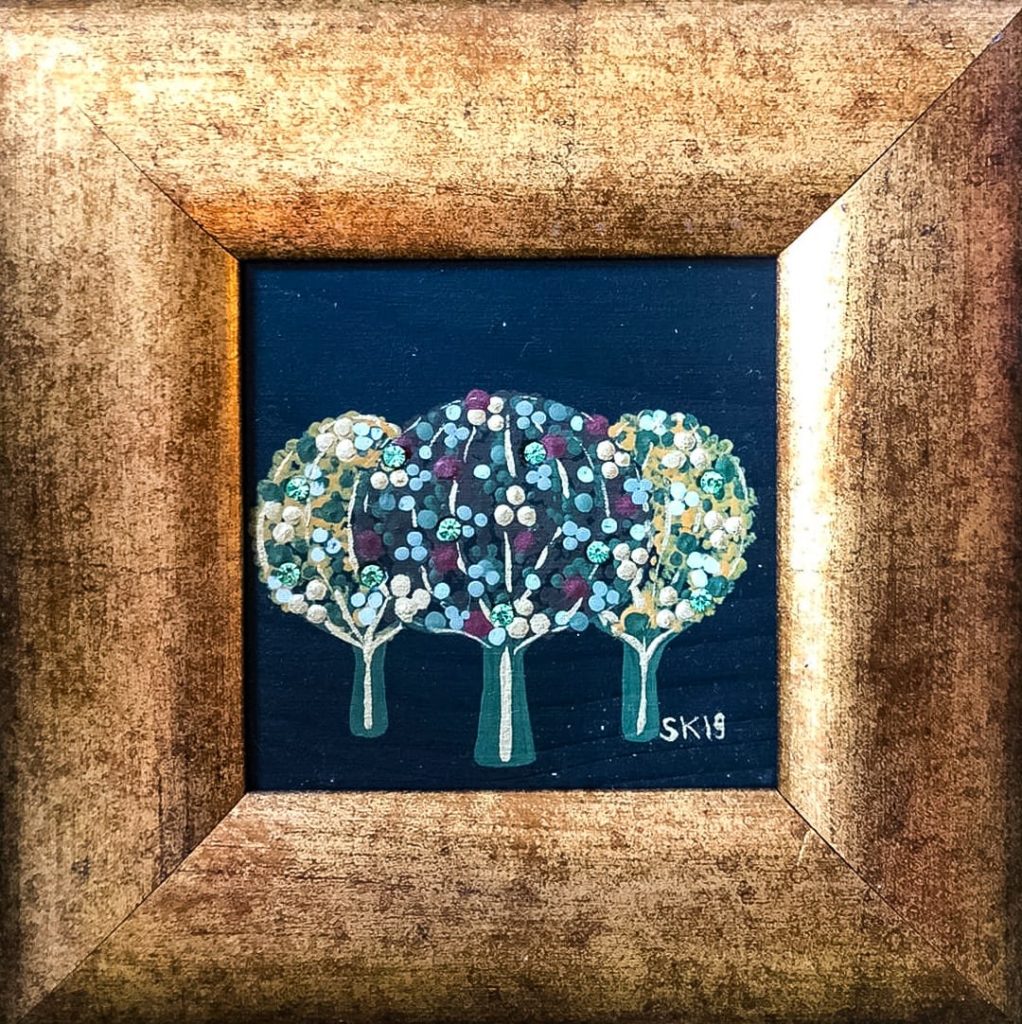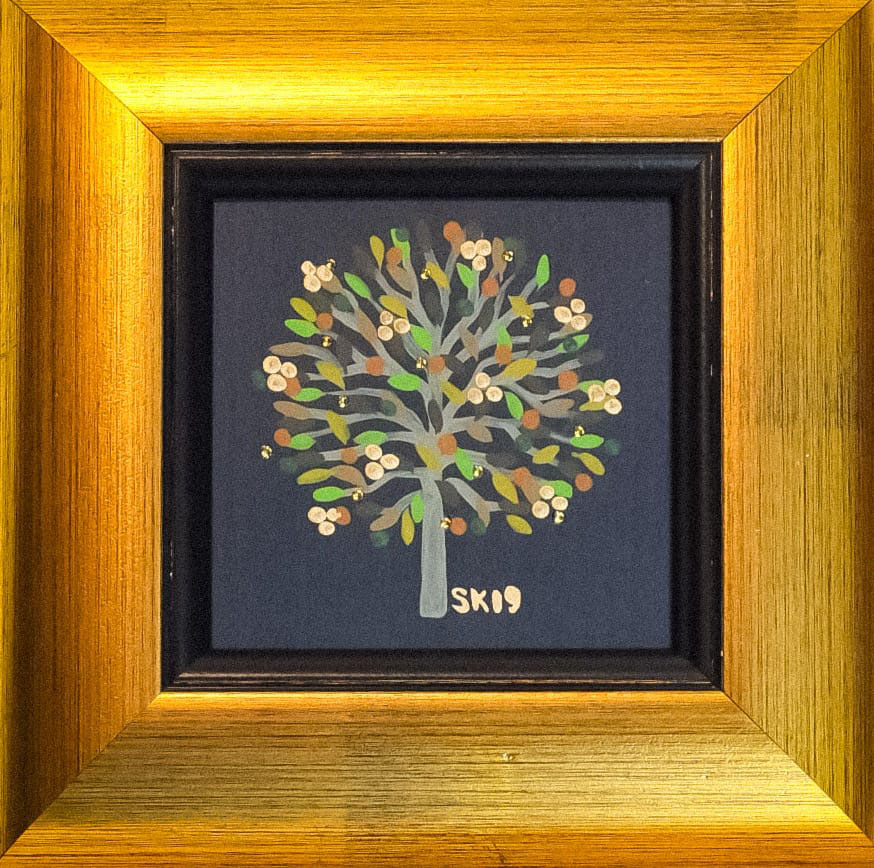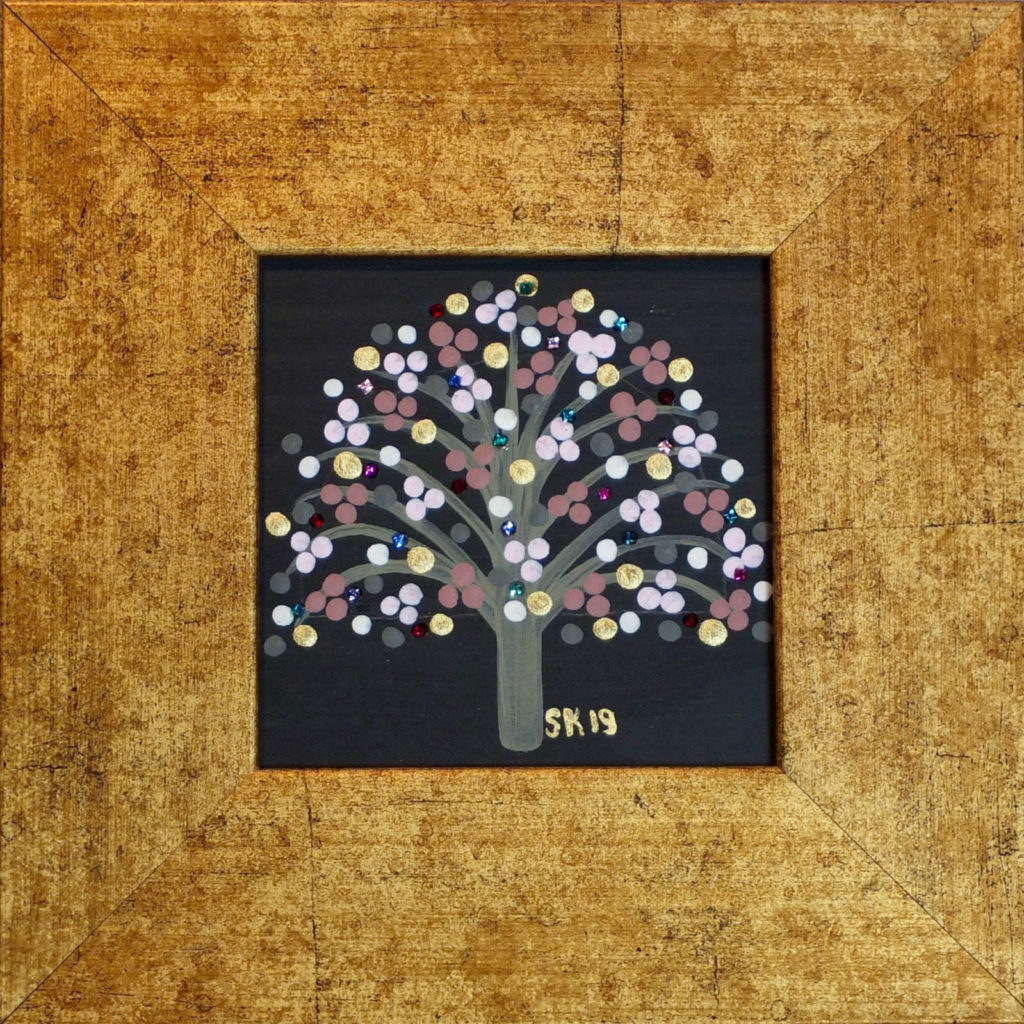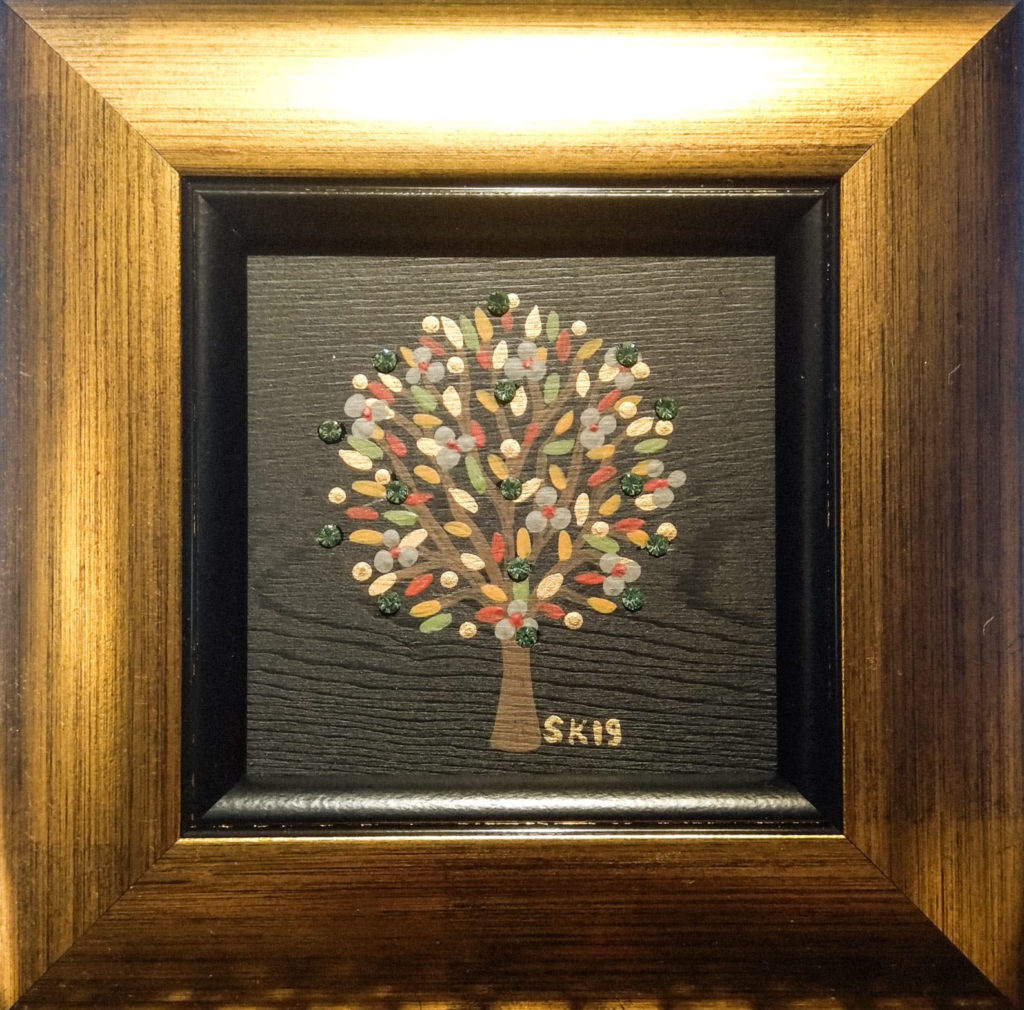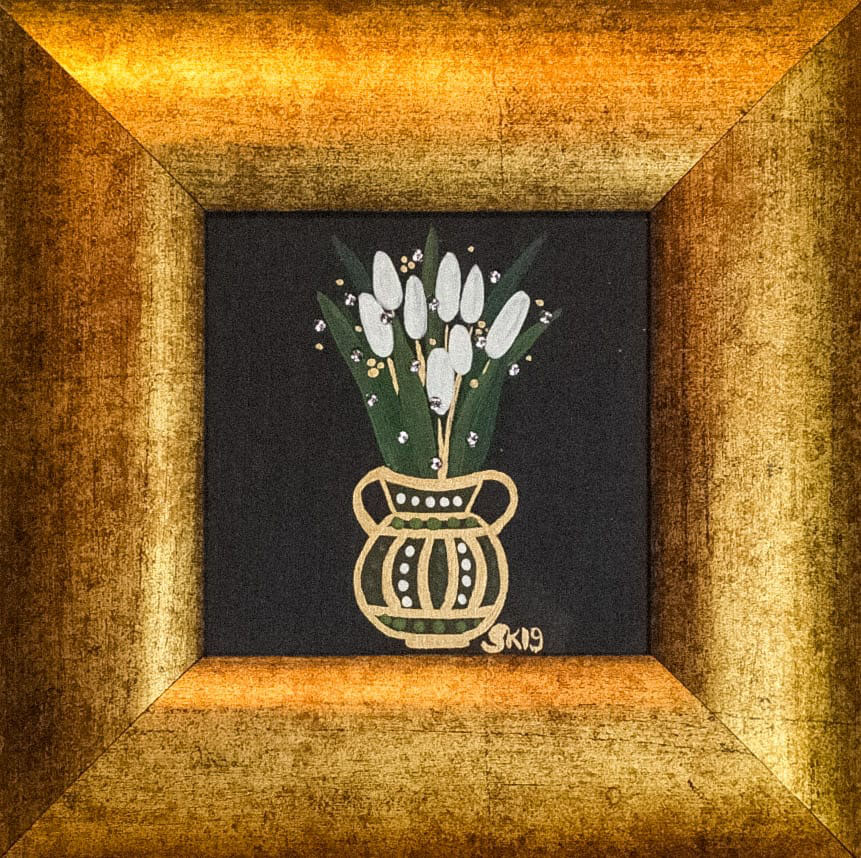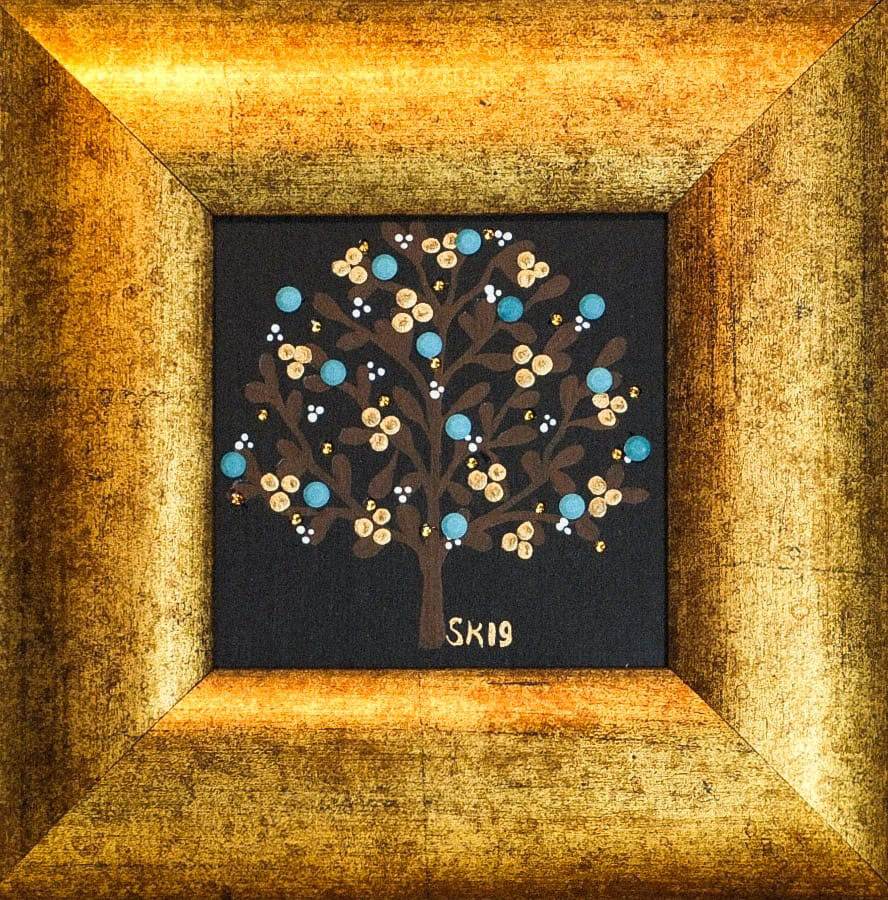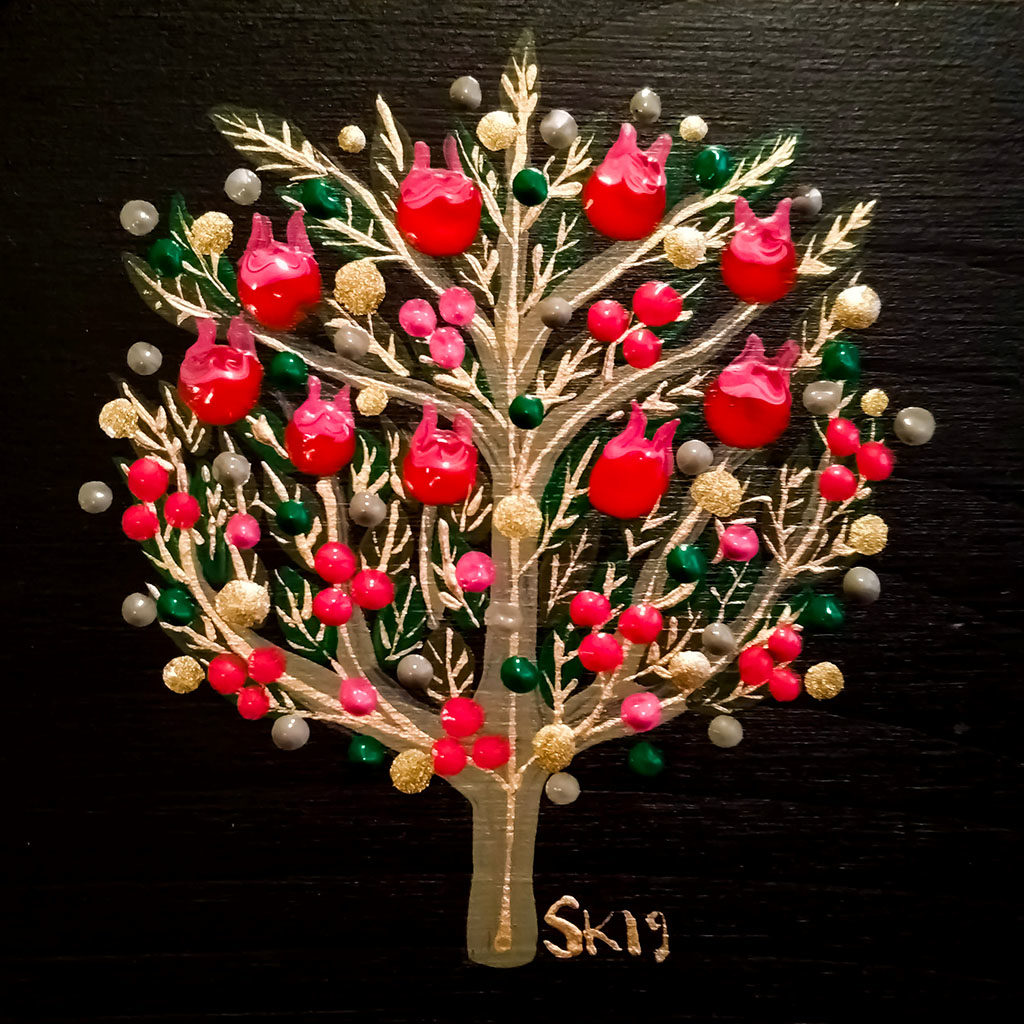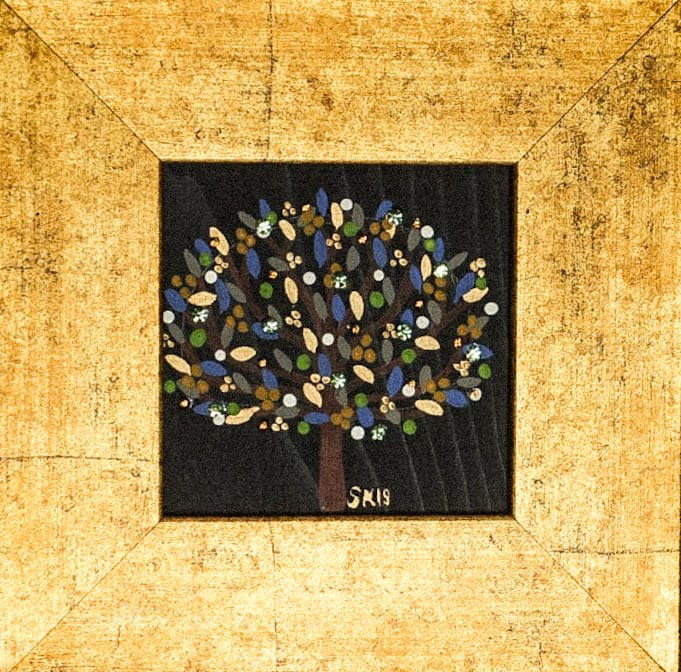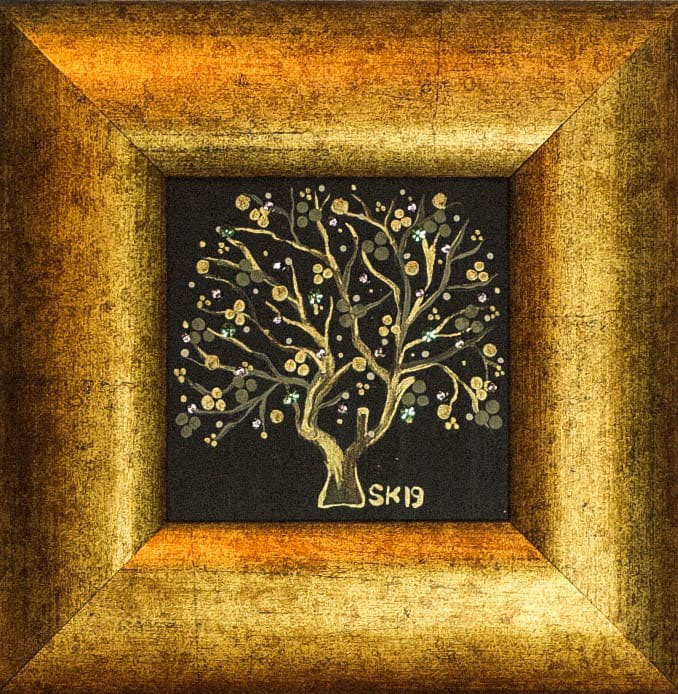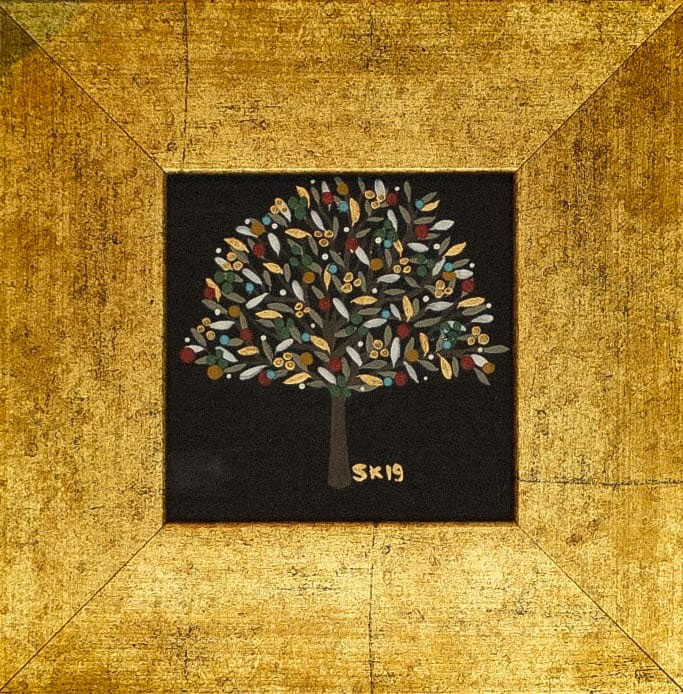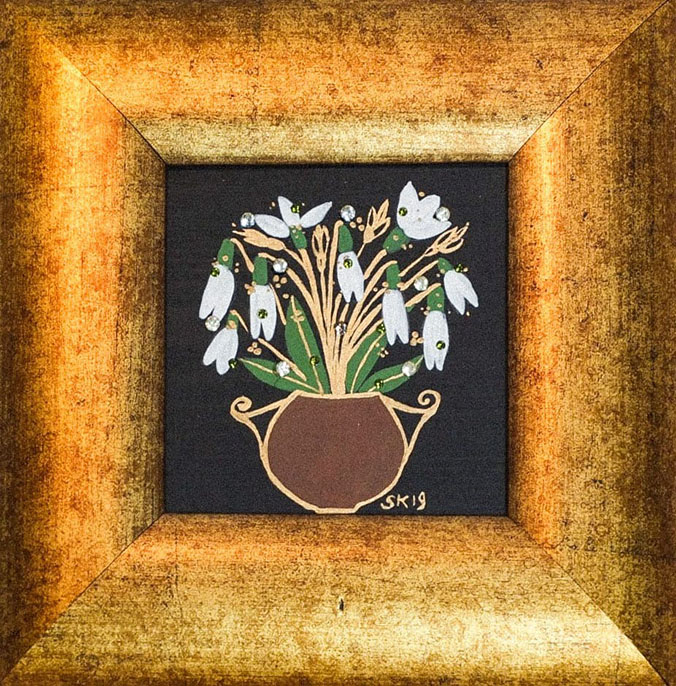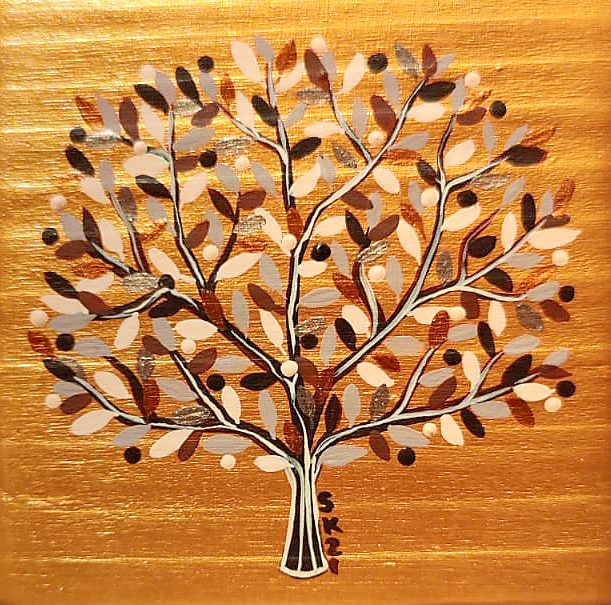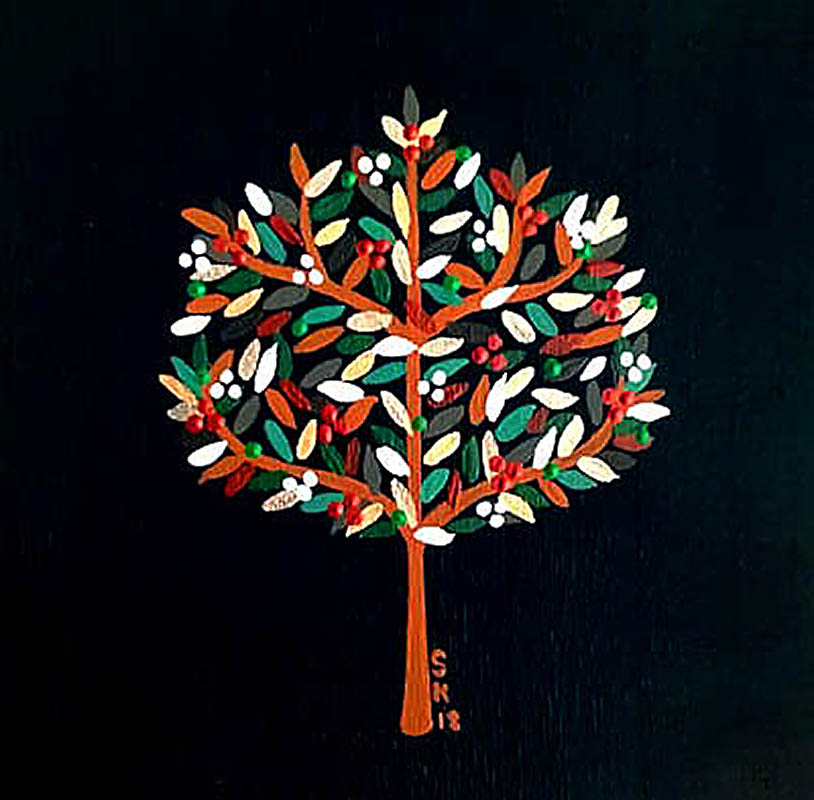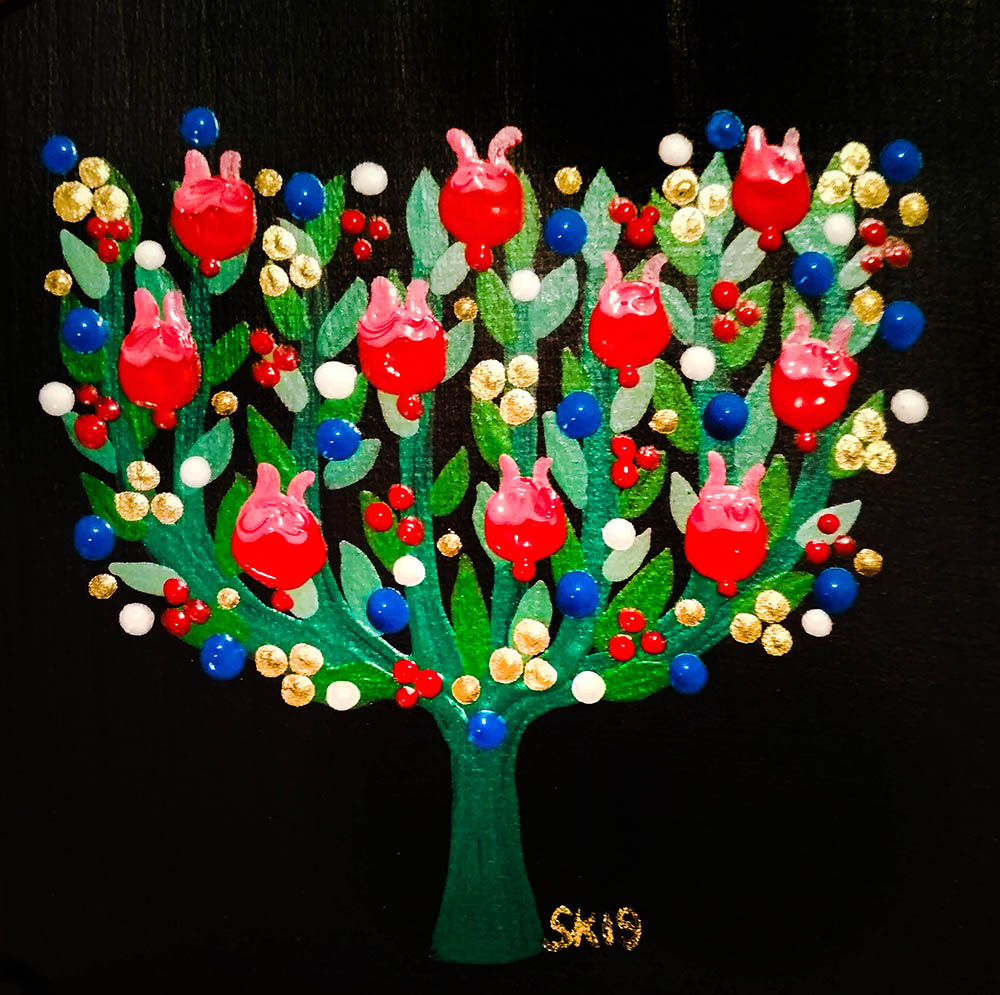The paintings in this section depicting flowers and trees are part of a bigger cycle of paintings called “Small paintings” consisting of two parts: “Whispers of the Leaves” and “Other Tiny Paintings”. They are characterized by their size which is, with a few exceptions, always 10×10 cm. The “Whispers of the Leaves” part is in a way a continuation of one of my first cycles “Trees and Flowers in Time”.
Trees, flowers and plants have always been an inseparable part of our life. Beyond their decorative properties, they usually have a symbolic meaning or association that is related to the subject of each painting.
Botanical symbolism has its origin in the literature of antiquity, where plants were often used as metaphors for virtue and vice.
In classical mythology, some human beings were transformed into plants and trees as a reward or punishment for their deeds. Such is the story of Narcissus, the vain youth who fell in love with his own reflection and was changed into a flower that bears his name. Other plants are mentioned as attributes of gods and goddesses: grapes for Bacchus, god of wine, corn; wheat or other grain cultures for Demetra and Ceres, goddesses of abundance and agriculture; and others.
Religious writings also provide a wealth of tree and plant symbolism. The Bible and the Apocrypha writings contain many references to this.
A third major source for tree and plant symbolism were the medieval herbal recipe accounts. They described the natural properties of plants, the method for their cultivation, and their application in cooking and medicine.
Today, the association of trees, flowers and plants with various cultural traditions, mythology, music, art, literature, medicine, architecture, decoration, and last, but not least – sustenance, continues being wide spread and further embellished.
However, as humans’ knowledge of plant and tree world grows, we realize it is not merely a source for providing materials for sustenance, shelter, medical treatment or used in practicing religious beliefs, traditions and practices. It is responsible also for moderating ground temperatures, preventing soil erosion, acting as the lungs of our planet, etc. Also trees and plants can and do “talk” to each other via a complex system of “whispers” exchanged between their roots underground. Thus, it is not surprising that for many years the “structure” of trees and plants has been utilized for graphical classification and representation of knowledge and complex information.
“Throughout human history the tree structure has been used to explain almost every facet of life: from consanguinity ties to cardinal virtues, systems of law to domains of science, biological associations to database systems. It has been such a successful model for graphically displaying relationships because it pragmatically expresses the materialization of multiplicity (represented by its succession of boughs, braches, twigs and leaves) out of unity (its central foundational trunk, which is in turn connected to common root, source, or origin). This model continues to bear great significance in genetics, linguistics, archeology, epistemology, philosophy, genealogy, computer science, and library and information science, among many other fields”,
writes Manuel Lima in his “Book of Trees. Visualizing Branches of Knowledge.”
Manuel Lima also describes Leonardo da Vinci’s discovery of a mathematical principle which finds correlation between the size of the trunk of a tree and the size of its branches which pertains to all species of trees. Leonardo da Vinci noted that “as trees branch out, at any given height, the total cross-sectional area of the daughter branches equals roughly the area of the mother trunk or branch”. This correlation underlies all modeling of realistic computer-generated trees (fractals).
Furthermore, this correlation led to another discovery by the physicist Christophe Eloy, in 2011, in which he found out that the reason for the above principle of tree branching is not rooted in the way water flows through the tree’s branching system, but in the need for it to withstand wind. Thus, the tree has a fractal structure reflecting its need for resistance to the bending forces exerted by gusts of wind. This knowledge is widely used in achieving more efficient design of wind resistant objects and buildings, reflecting man’s efforts in trying to tame nature.
However, the most explicit symbol of trees and plants still remains connected to their roots, birth and growth, processes of decay, seasonal death and revival, all encompassing the cycle of life. The structure of a tree embodies the early views of the universe arrangement: roots were considered like the underworld and place of origin (home), a trunk was considered as the earth and a crown of a tree was associated with the sky. A lot of the folklore characters reached for the sky climbing up the limbs of trees. This denotes the constant striving of humans towards the hidden secrets of the skies and the universe. Humanity has reached spiritual enlightenment and salvation making it to the top of the Tree of Life in all epochs.
In the end, I would like to note that I am strictly focusing on the artistic presentation of trees and flowers related to their meaning and visually pleasing my audience. I am not a botanist as my images are not intended to be used for scientific purposes as they are not 100% botanically accurate.
The more mundane idea of this collection of small paintings is to make a mosaic of still lives of flowers and trees which we use in our lives for beautifying the spaces we live in, to commemorate important events in the lives of our dear ones, to use them as a tribute to the sustenance and healing properties these plants and trees have, as well as to embody them in the form of small amulets which adorn our homes with a symbolic protective function.
Each of these still lives can be viewed upon as a separate image with its own symbolic meaning. However, they can also be regarded as a compact mosaic or serigraphy.
Hence their collective name “Whispers of the Leaves” – they are like small echoes from the forest’s different botanical inhabitants which come in a series of little ethereal waves. It is up to each one of us whether to hear them or not, to extract and summarize a distinctive message for him or herself and to decide how to feel them.
